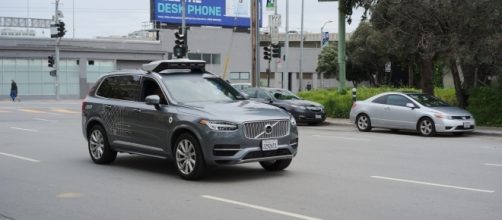It’s no longer a question of whether autonomous cars will ever drive on roads. In some communities across the U.S., such as Pittsburgh and Tempe, they already are. Uber’s self-driving cars have logged one million miles so far and Lyft plans to roll out its autonomous pilot soon on the chaotic streets of San Francisco.
However, there are still a few tiny details to worked out. Small matters like how courts will handle a whole new body of case law formed when self-driving cars get into accidents. Or how to ensure that these cars have proper security that can’t be compromised by hackers so they can needlessly kill others.
And there is also the question of what cities are going to look like if people abandon their own cars and render parking lots as popular as video rental stores.
These are other subjects related to the autonomous car revolution were the subject of discussion during a panel session at Mobile World Congress in San Francisco, California last week. “Autonomous vehicles are here today,” said James Dawson, managing director of the Connected Car for Cisco Jasper, during the conference last Wednesday. “The biggest issue is a willingness to accept a car that you’re not in control of.”
Cars now big data collectors
That lack of control raises the big question of who’s at fault in the inevitable driverless accident.
Vehicular cases today generally rely on the “he said, she said” standard where a judge or jury must choose a side without a lot of supporting evidence. But autonomous cars are huge collectors of data, including how fast a vehicle travels and right or left turn movement, right down to the millisecond.
“It’s going to be very interesting once this evidence starts being entered in court cases,” said session panelist Alex Manea, director of mobile security for BlackBerry, whose company has made a major investment in autonomous technology.
There is a general belief among industry experts that data logging will bring clarity around vehicle to vehicle incidents, but that still leaves open the question of who’s at fault.
Last week, the National Transportation Safety Board (NTSB) concluded that Tesla’s autopilot system design contributed to a 2016 Florida crash that which resulted in a fatality. Investigators found that Tesla’s software allowed the car to drive autonomously at speeds up to 90 miles per hour.
“There’s people who are going to take this technology for granted,” said Dawson, during a discussion of the Tesla crash. He pointed out that companies who write the software controlling automated steering may assume a lot more liability in the future.
Threat model increases
Today’s cars are now essentially rolling computers, with multiple systems that are often connected to the Internet. Security researchers have sounded alarms about vulnerabilities which allow hackers to access data or control systems remotely.
“Cars are IT networks, they’re not dumb things that get you from point A to point B,” said Manea. “It fundamentally changes the threat model.”
This will put pressure on autonomous car makers to update critical security protections, such as data encryption and firewalls, within a vehicle’s architecture. “Security is going to be a huge issue on the end-to-end design of these vehicles,” said Dawson.
The emergence of ride-sharing companies such as Uber and Lyft in communities across the world has given rise to a new industry: vehicles-as-a-service. This is beginning to change consumer driving habits and will soon have a profound effect on cities, as Uber and others migrate to autonomous driving. “Ten percent of Uber riders under the age of 30 have said they aren’t planning to buy a car or have given up their car,” said Nundu Janakiram, group product manager for Uber, during the panel discussion.
As consumers increasingly use ride sharing, the need for parking garages and even maintenance shops may change dramatically, potentially opening up major tracts of developable land in urban areas. Autonomous cars, continuously circling around cities, will fuel this change as well.
“There’s got be fundamental architectural changes,” said Cisco’s Dawson. “I think we will see cities evolve over time.” And as autonomous cars become more widely used and driving habits change significantly, we are all going to evolve as well.


